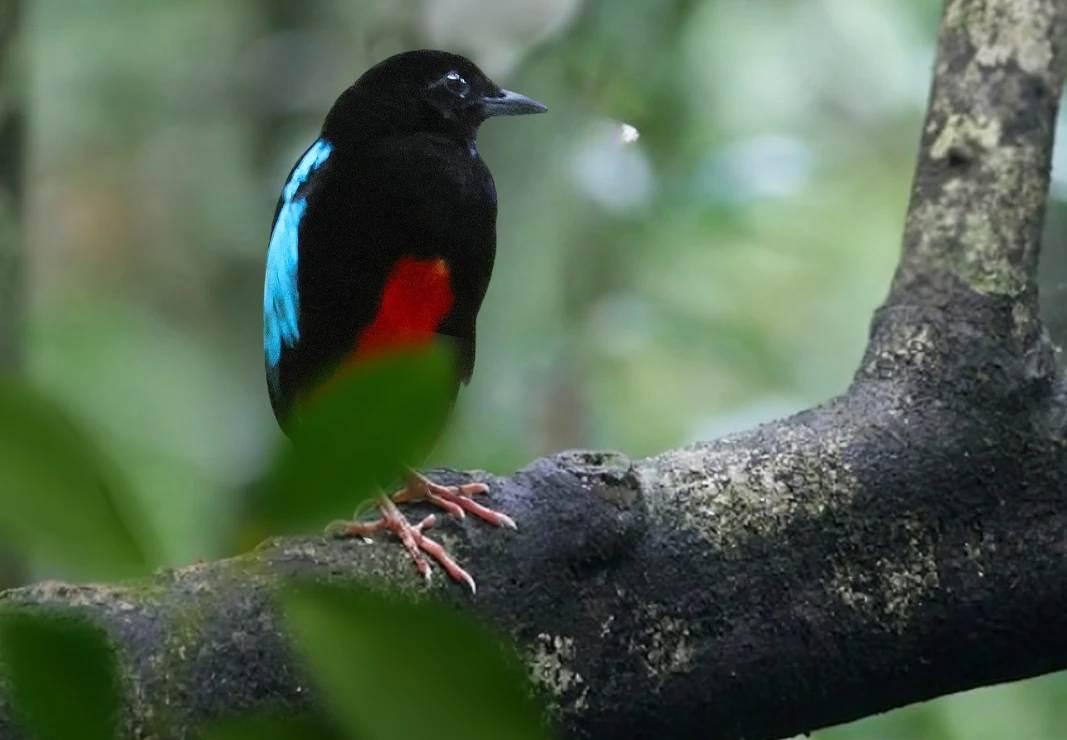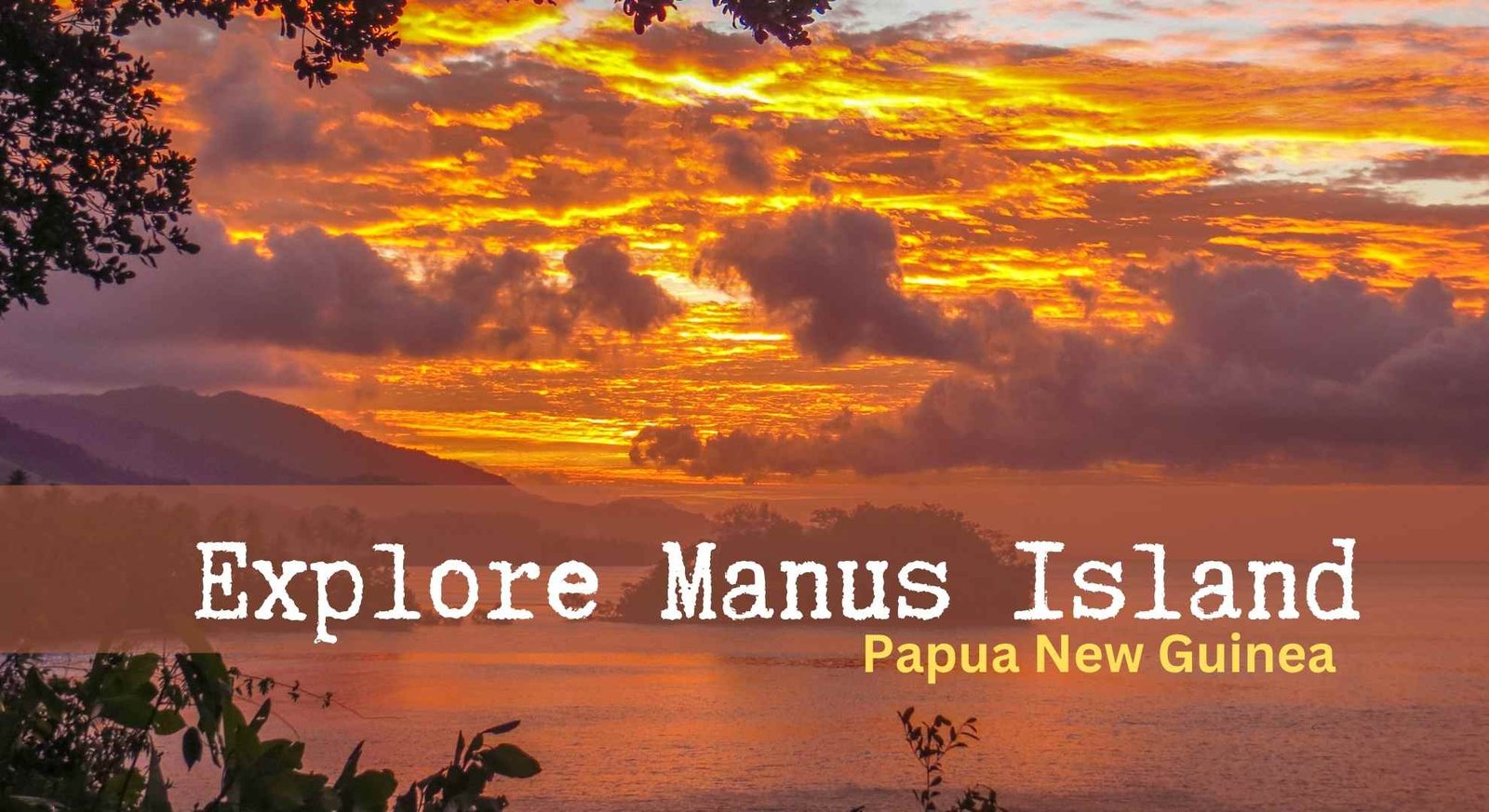Chasing the Super Pitta: A Journey to Manus Island
Home › Chasing the Super Pitta: A Journey to Manus Island
In the Quest for a Rare Bird: A Remote PNG Expedition
Pittas are among the most unusual birds found in the tropics. Their colours are vivid, their habits secretive, and spotting one is never easy. With over forty species spread across forests from Africa to the Pacific, finding them all is the kind of challenge that keeps many birders going. I have had them on my list for years. During the past twelve years of travel, I have managed to photograph a few of the rare and shy ones. But I always knew that two species would test my limits. One is the Black-faced Pitta from the Solomon Islands. The other is the Super Pitta, which lives only on Manus Island in Papua New Guinea. It is endangered, localised, and difficult to find.
Since 2014, I have been travelling to Papua New Guinea almost every year. More than once, I tried to arrange a side trip to Manus. Each time, something came up. Sometimes it was political tension. Sometimes the flights were off. Other times, I simply could not find anyone on the ground who had seen the bird recently. I reached out to a few tour companies, but the replies were always vague. Most said it would take at least a week to even stand a chance. Some put the odds at one in ten. The common message was clear. You might travel all the way there and still leave with nothing more than a brief call or shadow. After hearing this more than once, I shelved the plan.
Things changed in 2023. A local contact from Manus called out of the blue. His message was short. A Super Pitta had been showing up at a hide. It was coming out in the open. I would be able to see it properly. That was all I needed to hear.
In 2024, while leading a photo tour in Papua New Guinea, I decided to go for it. Two friends joined me for the trip. We flew to Momote Airport in Lorengau. It was raining when we landed. The airport was small and sat beside the sea. Lorengau is the only town on Manus Island, and even there, things move at their own pace. The population is somewhere between thirty and forty thousand. The airport building was simple. There was no baggage belt or immigration queue. But right inside the terminal was a large poster of the Super Pitta. The words printed on it read, “Welcome to Lorengau – Home of the Super Pitta.”
After all the delays and dropped plans, I was finally here. I had come close to giving up, but now I was standing at the edge of the forest where the bird lived. A vehicle had been arranged for our pick-up. It was not a van. A flatbed truck with wooden benches pulled up outside. We climbed on board and sat in the back. The ride felt more like a trip to a logging site than a birding extension. The road was rough, the sky grey, and the air full of promise.
The drive took us along white beaches and past steep coastal cliffs. The water was calm, and the forest came right down to the shore. This was the kind of place you only reach by going far off the usual trail. The breeze carried salt and the scent of wet leaves. It was a quiet, scenic way to arrive. At the hotel, we had a quick lunch and waited for our local guide. Just after three in the afternoon, he turned up with a friend in a well-used jeep. There was no delay. We got in and started the drive to the hide. It took around forty-five minutes, heading deep into the rainforest. Before entering the forest, we stopped by the guide’s house. His family greeted us kindly. His children peeked from behind the door, and his wife offered us tea and fruit. They had been expecting us. We did not stay long. Time was short, and the light would not last. The trail into the jungle was damp and full of mosquitoes. Within minutes, our clothes stuck to our backs. The air felt like wet cloth. The ground gave under each step. The only sound was our breathing and the buzz of insects. We reached the hide by four. It was nothing more than a small cover of sticks and branches beside a narrow clearing. We set up our cameras, each tripod tilting slightly on the uneven ground. The heat had not eased. Mosquitoes landed on every inch of skin. Our guide stood nearby and began to call. He used only his voice. No device. No speaker. His call echoed through the trees.
We listened.
Nothing.
He called again.
Still nothing.
Then came a reply. Far off. Short. One call.
For a moment, we held our breath. Was it coming closer? The call did not repeat. The forest went quiet again. The guide called a few more times, pausing between each one. Nothing answered. Half an hour passed like that. Stillness returned. As the light faded, we packed our things. The walk back felt longer. At the hotel, we had a shower, ate something small, and went to bed early. We were tired and bitten all over. The bird had not come. But there was always tomorrow.

Day two began at 4.30 in the morning with thunder shaking the windows and rain hammering the roof. Lightning lit up the room, and the wind knocked hard against the walls. Any hope of a morning session vanished quickly. We turned over and went back to sleep. By seven, the storm was still going strong. Rain poured in sheets, soaking the trees outside. There was no reason to rush. We ate a slow breakfast and sat around the table, checking lenses and wiping gear. Around eleven, the rain began to ease. Our guide had been waiting since first light, but the forest floor near the hide would still be soaked. Heading in now would not help.
After lunch, we made a new plan. Our guide mentioned a small island nearby, owned by his uncle. Just one family lived there. We decided to go. A boat was arranged, and we set out across the bay. The sea was calm and pale green. Flying fish skimmed across the surface. The island was small and quiet. The family welcomed us with warm smiles and brought out tea. We wandered through the trees, spotting pigeons, waders, and a few forest birds in the canopy. The place felt untouched. Tin-roofed huts stood back from the shoreline, and the air was filled with the sound of birds and breeze.
We stayed for a couple of hours, then turned back as clouds gathered again. Rain caught us midway across the water and stayed with us until we reached the shore. By the time we got back to the hotel, we were soaked through. There was not much of the day left. We dried off, had dinner, and went to bed early. The pitta had not shown itself, but the day still gave us something. We slept hoping that tomorrow might bring a break.
Day three began in silence. At 4.30 in the morning, we woke to still air and dry ground. For the first time all week, there was no sound of rain. We ate a quick breakfast and left for the forest. The trail was still damp from the day before. The undergrowth held moisture, and the air hung heavy with heat. It took us close to an hour to reach the hide. We arrived just before seven.
Then something happened. As we settled in, a call came from nearby. Clear and sharp. Seconds later, the Super Pitta stepped out in full view. No blur in the distance. No shapes behind branches. It was right in front of us.
For ten to fifteen minutes, it remained still and watchful. It stood tall. The largest pitta I had ever seen. Unlike others, which flash colour and vanish, this one held its ground. Its size, its presence, the way it moved. All of it made an impression that went beyond the colours on its feathers.
We took photographs and video without rushing. The bird gave us time. No one said much until it moved back into the forest. By nine, we began the walk out. The sun had broken through by then, though the forest floor stayed dark. On the way back, we picked up a few more species. Manus Fantail. Manus Monarch. Black-headed Cicadabird. Other island endemics showed up briefly.
Back at the guide’s house, we sat on his porch and talked. He mentioned a rare snail species, the Emerald Snail. It lived deeper in the forest. He spoke about how hard it was to find, and how few people even asked about it. That opened up a longer chat about future visits, possible trails, and whether guided trips for lesser-known species could help support local conservation. He listened and shared ideas. The interest was there.
After lunch and a short rest, we returned to the hide for one last session. The light was soft and the forest quiet. At 3.30, the pitta returned. It came in steady, gave us another clear view, and stayed long enough for another full round of photographs.
By 4.30, we packed up. The walk back felt lighter. That day had given us everything we had hoped for. It was a moment that had taken years to arrive. And it was worth every step.
The Final Morning & Departure
The next morning, with no pre-dawn alarms, we slept in until 8 a.m., enjoying a leisurely breakfast at the hotel.
By 10 a.m., our guide drove us to the airport, making a few scenic stops to admire the beaches and the sea.Our flight was delayed—departure time unknown.
We didn’t mind. We had seen the Super Pitta. And that was all that mattered.
Endemic Explorer organises remote nature tours, birdwatching, and wildlife photography expeditions worldwide. Subscribe to our newsletter for updates on upcoming adventures, expert insights, and travel stories
Latest Post

Papua New Guinea Bird Photography Tour Report – 2024

Chasing the Super Pitta: A Journey to Manus Island

